Photo by Ivor Forrest on Pexels
When I was traveling in D.C. last week, I was struck by the Halloween decorations. I was walking on brick sidewalks, past grooved iron lamp posts, painted black. Tethered to these poles were skeletons, ten feet tall, arms dangling helplessly, heads nodding in the wind. They towered over me as I passed. A hooded Death, empty of face, swayed over a doorway.
The house nearby had a different vibe—the tiny front yard was swamped by giant orange inflated pumpkins, motors humming inside, bumping against one another and rising to the height of the window sill.
When I was a kid, people put pumpkins on their front stoops—the carved, real ones, already drooping inwards from rot—a couple of days before Halloween. That, and some multicolored corn cobs on the door, pretty much did it for decor. Now it feels like Halloween decorations are monstrous and elaborate, hung all month long, in a bid to compete with the coming holiday lights.
I wondered if the people, as they decorated, dropped down inside themselves and confronted their own deaths. Did they ask themselves if they were living up to their dreams and values before it was too late? Did they consider the lives of those they’ve lost? Or did they choose those humming, bobbing pumpkins to protect them from it all, to focus on the candy and the sugar high, to jet away from the dark feelings?
Don’t laugh, but lately I’ve been thinking about the symbolic meaning of pumpkin spice. It’s such a powerful meme, all those images of crisp autumn leaves, baking, candles, cozy sweaters. All that scent, the flavor of community and home. All that longing, boxed up and sold back to us as the pumpkin bread mix at Trader Joes.
There’s such a tension here, between Fall as a space of burrowing down, gathering, firelight, storytelling, and Fall as the harbinger of decay, of returning to the earth as bone. There’s an Emily Dickinson poem that walks right into it:
The name–of it–is “Autumn” (656)
The name—of it—is "Autumn"—
The hue—of it—is Blood—
An Artery—upon the Hill—
A Vein—along the Road—
Great Globules—in the Alleys—
And Oh, the Shower of Stain—
When Winds—upset the Basin—
And spill the Scarlet Rain—
It sprinkles Bonnets
—far below—
It gathers ruddy Pools—
Then—eddies like a Rose—away—
Upon Vermilion Wheels—
Commenting on the poem, one teacher of mine said, “That’s Emily Dickinson for you. Everyone else is kicking leaves, and all she sees is a bloodbath.”
I’m an only child. At this time of year when I was young, I’d sit in the back of the car, quiet, while my parents drove through the dusk. I’d look for the houses with squares of yellow light glowing out into the gloom. I’d watch, looking for people inside, imagining how they lived. I felt like the child in a fairy tale, locked out in the cold, scratching at the window to be let in.
It’s easy to feel that everyone else is gathering, and you are the bereft, the grief-filled, the one who will be defeated by the darkness. You come home, switch on the light, hear only the ticking of the cheap kitchen clock, feel the coldness of air that hasn’t moved since you left.
It’s necessary to hold on to the dying and the loneliness of being alive, even as we gather and huddle, filling our kitchens with cinnamon, nutmeg, ginger and cloves. What does it mean to assert we can all come together, under the sign of pumpkin spice? Does it paper over the pain of what is being unearthed in this moment of reckoning, when as a nation we are being asked to face and overcome generations of racial and sexual violence? Is the kitsch of the season a kind of violent subduing of that which must arise from its entombment?
I don’t want to be a mechanical pumpkin, my face plastered with false happiness, when so much is at stake, so much must be named. And I still long for community, for a hearth around which we can all sit and share stories. To say the syllables of what we might become.
It makes sense to me that trying to imagine the death of the dominant culture, and of ways of being that have been practiced for centuries, would engender rage and terror. It makes sense that the un-knowing of where we will be, on the other side, is enough to make people freeze up, not want to speak. And at the same time, there’s the simple, common, goodwill: the hope that the little things, like a slice of pumpkin bread, can bring neighbors together, can remind us that we aren’t alone, that the desire for community is deep and strong.
So how do we love each other, and bring bread, and yet also have hard conversations, fight the violence, name the ways it tears at our hearts and breaks us?
When I get ready to speak publicly about what I think and how I feel about patriarchy and sexual violence, about economic inequality, about whiteness and ecosystem destruction and rampant growth, I assume I will be met with derision, with people turning away, wanting me to stop talking. But lately, I’ve been encountering people whose shoulders relax when I say these things; who exhale with relief when I make the opening in conversation.
I’m still shocked when they step toward me and share back. They’re telling me about the steps they’re taking to save the land that abuts their farm, to save it from development. They’re telling me about the people they’re gathering with, to push things forward. I have been assuming that community happens when the hard things are silenced and the violence is buried. But lately, I am seeing that is me who is making assumptions that are wrong, and that the community I crave is already here, that it is ready, that it is digging in the darkness, spades and shovels and hand trowels, turning the ground.

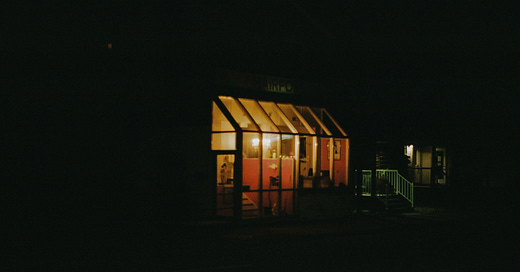



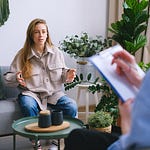


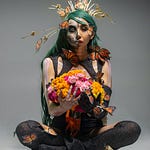
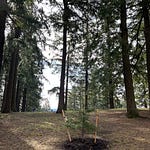

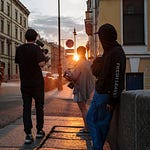
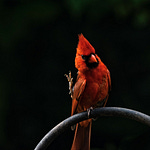
Share this post